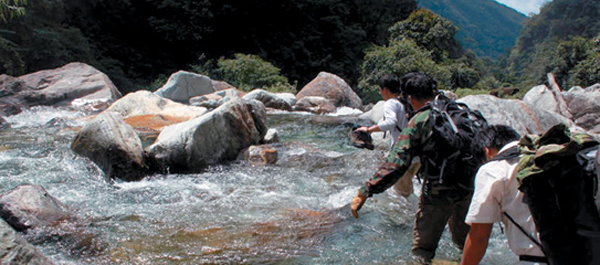
Thanks to the dogged perseverance of the CNAC Association, C-47 No. 60’s disappearance is no longer a mystery
The search for China National Aviation Corporation C-47 No. 60 began on November 18, 1942, the day after the transport was reported missing while flying from Kunming, China, over “the Hump” to India. Its crew included pilot John J. Dean, a former Flying Tiger; my cousin, copilot James S. Browne, a transfer from the RAF’s Air Transport Auxiliary; and Chinese radioman K.L. Yang, who radioed a message saying all was well as they approached the mountains. But No. 60 never arrived at its home base in Dinjan, India. Searches went on for weeks, to no avail. The crew was eventually declared dead on June 17, 1943.
Fast-forward 61 years, to a 2004 CNAC reunion in San Francisco, where I met Clayton Kuhles of MIA Recoveries. Kuhles, who had previously discovered 19 aircraft lost in the China-Burma-India Theater during WWII, was intrigued by the story of my cousin’s missing C-47. He studied official reports of the incident, and consulted villagers in the crash area with the help of an American mountaineer in China. Based on his research, Kuhles decided to mount an expedition to Yunnan Province to pinpoint the wreckage.
On September 14, 2011, Kuhles arrived at the base of a mountain near Dali. Local guides initially agreed to make the climb to the wreckage site, but Kuhles said that “after days of intense trekking and numerous very hazardous river crossings,” the guides gave up. A few days later the team tried again, accompanied by locals who had previously visited the site. The weather deteriorated, and when they encountered a rocky drainage course, the new guides also quit. “The steep, rocky drainage was now a flowing waterfall,” reported Kuhles, “making for probably the most dangerous downclimb in my entire mountaineering career.”
The weather eventually cleared, and the team discovered an easier route. When team members finally reached the crash site, they found bits of metal spread over a large area. Although a rockslide had covered much of the wreckage, pieces of the plane were still visible. One piece bore the stamped numbers “4681,” conclusive evidence that this was indeed CNAC No. 60.
Thanks to the team’s dogged perseverance and the generosity of the CNAC Association and its members, C-47 No. 60’s disappearance is no longer a mystery.




